The Long, Bloody History of the Israel-Gaza “Border”
The current conflict has its roots in the 75-year struggle over the constantly shifting physical boundaries between Israel and the Palestinians whose land it has occupied.
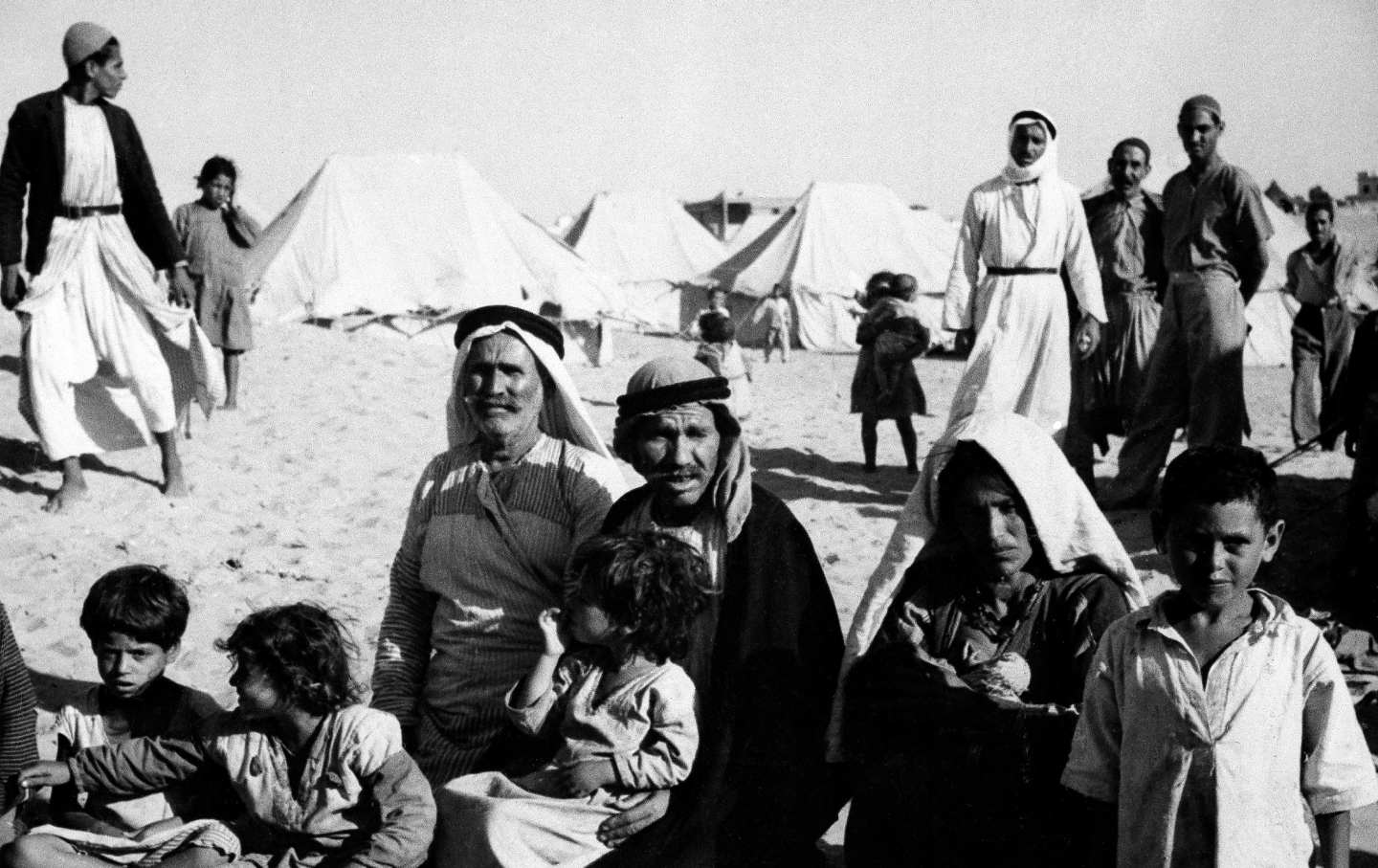
When Hamas attacked southern Israel on October 7, it broke through a boundary that was widely considered impenetrable. Starting in the 1990s, and intensifying significantly since Hamas took power in 2007, the Israeli state has enforced a harsh border regime designed to keep both Hamas and Gaza separate from Israel —despite the territory’s remaining under Israeli occupation by most international judgments. The border regime around the Strip included concrete walls above and below ground, aerial surveillance, cameras, motion sensors, and weaponry, as well as the blockade imposed since 2007.
Yet October 7 upturned Israeli assumptions that these methods would keep them safe. Israeli journalist Amir Tibon, who lives in a kibbutz just 800m from Gaza and survived the attack, later said, “October 7… we realized that this [security] project is an utter and complete failure. Israel invested so much in it, and what did the Hamas people do? They took a few tractors and SUVs, and they ran over the border fence.… they just walked through the border.” Criticizing the Israeli state’s highly-publicized failure to protect its citizens that day, Tibon added, “We had a contract with the state that communities like ours protect the border.… We protect the border with our presence there.… We protect the border, and the state protects us.”
Tibon’s words speak to a deeper untold history about the Israel-Gaza border. For all the talk of its multibillion-dollar state-of-the-art security system, its enforcement has always relied on maintaining the presence of civilian Jewish communities, alongside the exclusion of Palestinians. This was especially true when the border first came into being in the early years of the Israeli state.
Like most borders, the line demarcating the Gaza Strip is the product of violence. It is also entirely man-made, not correlating to any natural geographical features. First fixed in 1949, it was originally agreed as an armistice line between Israel and Egypt when they ceased direct hostilities at the end of the First Arab-Israeli War.
Significantly, the armistice line did not form part of any peace agreement or treaty—Israel and Egypt would not establish formal relations for another 30 years. As such, its meaning was open to regular questioning from all parties. When Prime Minister David Ben-Gurion declared the establishment of the state of Israel in May 1948, he did not specify its borders. To this day, in fact, Israel has never specified its international borders besides those with Egypt and Jordan, although Israeli state maps—including one brandished by Prime Minister Benjamin Netanyahu at the United Nations just weeks before the Hamas attacks—often show the country covering the full expanse of land between the Jordan River and the Mediterranean Sea.
The events sometimes known as the First Arab-Israeli War are usually known by Palestinians by another name: the Nakba. Meaning “catastrophe,” this refers to the Palestinians’ dispossession and displacement when the state of Israel was established. From 1947 to ’49, Zionist militias and later the Israeli army forcibly expelled large numbers of Palestinians from towns and villages across the country; others fled to escape the violence. In total, more than 750,000 Palestinians—around three-quarters of the population at the time—were made refugees.
Of this number, more than 200,000 sought shelter in the Gaza Strip. Comprising less than 1.5 percent of historic Palestine, this tiny territory saw its population more than triple as a result of the Nakba. Thereafter, it was home to an overcrowded majority-refugee population, hemmed in by the 1949 armistice line that would become a critical new frontier for Israelis and Palestinians alike.
While the armistice line was recognized by the Egyptian state, many Palestinian refugees rejected its legitimacy. In many cases, they were only a short distance from the homes and villages they had been forced to leave; some could even still see their lands from the refugee camps in which they now lived. In the early aftermath of the Nakba, some Palestinians sought to cross back and visit their old homes, now in Israeli territory, to reunite with loved ones left behind, retrieve belongings, or tend to their crops.
Over time, these journeys were increasingly undertaken for a different purpose, by fedayeen (Palestinian militants) carrying out ambush operations against the Israeli state and civilians. Israel did not distinguish between them, categorizing any Palestinian caught in its territory as an “infiltrator” to be killed immediately. (Israeli historian Benny Morris has estimated that anywhere from 2,700 to 5,000 Palestinians were killed crossing a border into Israel between 1949 and 1956.) The rationale behind this was clear: Statehood depends on territorial control, which requires border enforcement. In order to enforce the border as the Israeli state saw it, Palestinians had to stay on the other side of it.
But enforcing the Gaza border also involved measures on the Israeli side. As Tibon said in his survivor’s interview after the October 7 attack, “A border that does not have civilian communities and civilian life along it will not be properly protected.” Along with a powerful military, this civilian presence has been part of the Israeli state’s border strategy from the outset. In the early 1950s, it began building so-called development towns (ma’abarot in Hebrew), designed to settle the periphery and provide housing for its significant influx of immigrants.
The fledgling Israeli state faced obvious difficulties in doing so. Its border regions were hardly desirable places for incoming Jewish immigrants to start their new lives. Residents had to grapple with underdeveloped infrastructure, limited economic opportunities, and the risk of ambush operations coming from across the borders. To ensure that the ma’abarot were settled, the Israeli state resorted once again to forced migration—this time in a different form.
From the late 1940s and throughout the 1950s, Israel experienced a significant shift in its Jewish demographics, as immigrants started coming overwhelmingly from the Middle East and North Africa rather than Europe. Over this period huge numbers migrated to Israel from Iraq, Egypt, Morocco, Yemen, and elsewhere. Generally looked down on by the European-origin Israelis who mostly ran the state, these Mizrahi (Eastern) immigrants were seen as the ideal candidates to settle the border.
To ensure that they did so, the state employed varying degrees of coercion. In many cases, Mizrahi immigrants were put in trucks and simply dumped in development towns in the middle of the night. They could be denied residential rights in the more desirable central parts of the country and often found themselves without the means to move anyway.
Sderot, today the largest town in the Gaza border region and one of the worst-hit places in the October 7 attack, is a prime example. First established in 1951 as a transit camp for Jewish immigrants and refugees from Iran and Kurdistan, it became a key development town designed to block Palestinian crossings from Gaza. Sderot’s own origin story embodies the demographic history of the region; it was built on lands previously farmed by Palestinians who were expelled to Gaza during the Nakba.
Popular
“swipe left below to view more authors”Swipe →The story of the Israel-Gaza border took another turn 18 years after the Egyptian-Israeli Armistice. When Israel achieved a decisive victory in the 1967 War, it occupied the two remaining parts of Palestine—including the Gaza Strip. At this point, the Gaza boundary ceased to be a sovereign international border, as the territories on both sides of it were now under Israeli control. The border accordingly became more porous, as Palestinians from Gaza entered Israel to work, and Israelis visited the Gaza Strip to shop at the markets there.
Of course, this semi-integration was highly limited; while Israelis in the 1948 territory enjoyed full citizenship and civil rights, Palestinians in the 1967 occupied territory remained stateless and subject to martial law. At the same time, the post-1967 occupation saw the establishment and expansion of illegal Israeli settlements across Gaza. They would eventually number 21 before Ariel Sharon’s government dismantled them in 2005 while continuing to maintain the occupation of Gaza via control of its air and sea borders, and all its land borders except for the short border with its ally Egypt.
Even prior to the 2005 disengagement, the Israeli state had long put an end to the post-1967 freedom of movement. After the First Intifada began in Gaza’s Jabalia refugee camp, the state started to impose immobilizing measures on the Strip’s Palestinian population (although not for Israeli settlers there). From 1991, Palestinians needed an Israeli permit to exit Gaza (or the occupied West Bank); in 1994, Israel built a fence around the Strip for the first time. These immobilizing measures intensified significantly after Israel imposed a full blockade on Gaza in the wake of Hamas’s takeover of the Strip in 2007. Since then, the border has functioned as a brutally reinforced boundary that allows very few people in or out of the Strip. Before October 7, cross-border exchanges mostly came in the form of rockets from Hamas and air assaults from Israel.
Why does this history matter? The current horrors we see playing out stem directly from these demographic dynamics, as many on both sides of the boundary today are the direct descendants of these original waves of migration and displacement. Today, more than 70 percent of Palestinians living in Gaza are Nakba refugees—either those driven out from their towns and villages in southern Palestine in 1948, or their descendants. When thousands marched to the border in 2018–20, they were demanding the right to return to those lands and seeking to highlight this origin story.
On the Israeli side, the legacy of the ma’abarot era also remains. While many of the communities attacked on October 7 have more recent histories—such as ex-Soviet populations who migrated to Israel in the 1990s—others can trace their lineage directly to the original Mizrahi immigrants placed in development towns. Sderot, the largest Israeli town in the southern border area, remains majority Mizrahi. It was one of the worst-hit towns in the October 7 attack, with 90 percent of its population having now fled.
This history also speaks to a crucial present reality: It is demographics that continues to underpin much of the violence in Palestine and Israel. When the state of Israel was first established, it forced Palestinian refugees across the Gaza border and never allowed them back. It then placed Jewish refugees from Arab and Muslim countries in the border zone on the Israeli side. In recent weeks, Israel has evacuated many of its citizens from the area in response to the Hamas threat and has ordered Palestinians to evacuate the northern part of the Gaza Strip. Yet, despite the region’s recent forced depopulation, demographics remains critical to its tensions. With the border now heavily reinforced since October 7, there is no sign that this will change any time soon.
Disobey authoritarians, support The Nation
Over the past year you’ve read Nation writers like Elie Mystal, Kaveh Akbar, John Nichols, Joan Walsh, Bryce Covert, Dave Zirin, Jeet Heer, Michael T. Klare, Katha Pollitt, Amy Littlefield, Gregg Gonsalves, and Sasha Abramsky take on the Trump family’s corruption, set the record straight about Robert F. Kennedy Jr.’s catastrophic Make America Healthy Again movement, survey the fallout and human cost of the DOGE wrecking ball, anticipate the Supreme Court’s dangerous antidemocratic rulings, and amplify successful tactics of resistance on the streets and in Congress.
We publish these stories because when members of our communities are being abducted, household debt is climbing, and AI data centers are causing water and electricity shortages, we have a duty as journalists to do all we can to inform the public.
In 2026, our aim is to do more than ever before—but we need your support to make that happen.
Through December 31, a generous donor will match all donations up to $75,000. That means that your contribution will be doubled, dollar for dollar. If we hit the full match, we’ll be starting 2026 with $150,000 to invest in the stories that impact real people’s lives—the kinds of stories that billionaire-owned, corporate-backed outlets aren’t covering.
With your support, our team will publish major stories that the president and his allies won’t want you to read. We’ll cover the emerging military-tech industrial complex and matters of war, peace, and surveillance, as well as the affordability crisis, hunger, housing, healthcare, the environment, attacks on reproductive rights, and much more. At the same time, we’ll imagine alternatives to Trumpian rule and uplift efforts to create a better world, here and now.
While your gift has twice the impact, I’m asking you to support The Nation with a donation today. You’ll empower the journalists, editors, and fact-checkers best equipped to hold this authoritarian administration to account.
I hope you won’t miss this moment—donate to The Nation today.
Onward,
Katrina vanden Heuvel
Editor and publisher, The Nation
More from The Nation
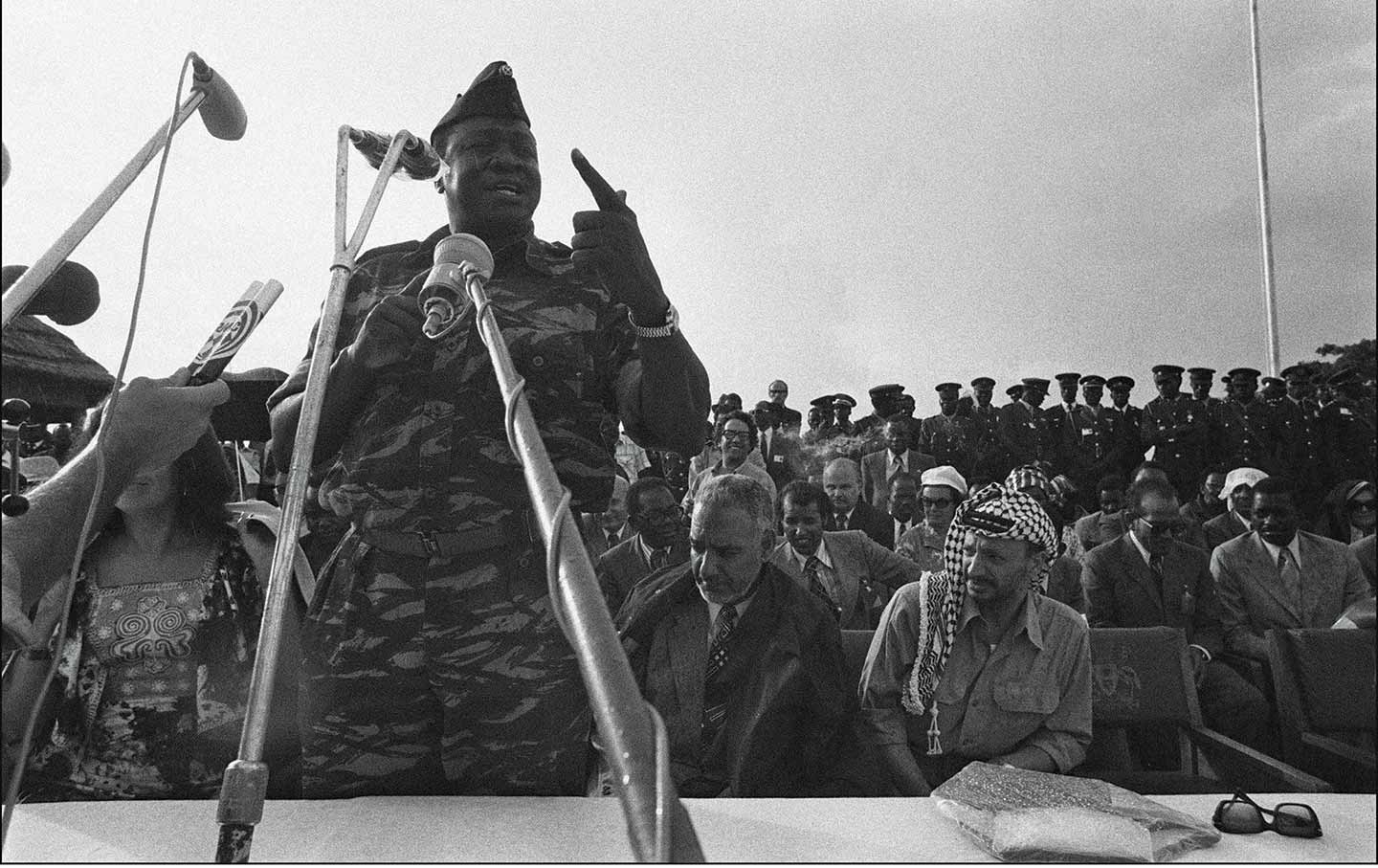
Mahmood Mamdani’s Uganda Mahmood Mamdani’s Uganda
In his new book Slow Poison, the accomplished anthropologist revisits the Idi Amin and Yoweri Museveni years.

The US Is Looking More Like Putin’s Russia Every Day The US Is Looking More Like Putin’s Russia Every Day
We may already be on a superhighway to the sort of class- and race-stratified autocracy that it took Russia so many years to become after the Soviet Union collapsed.
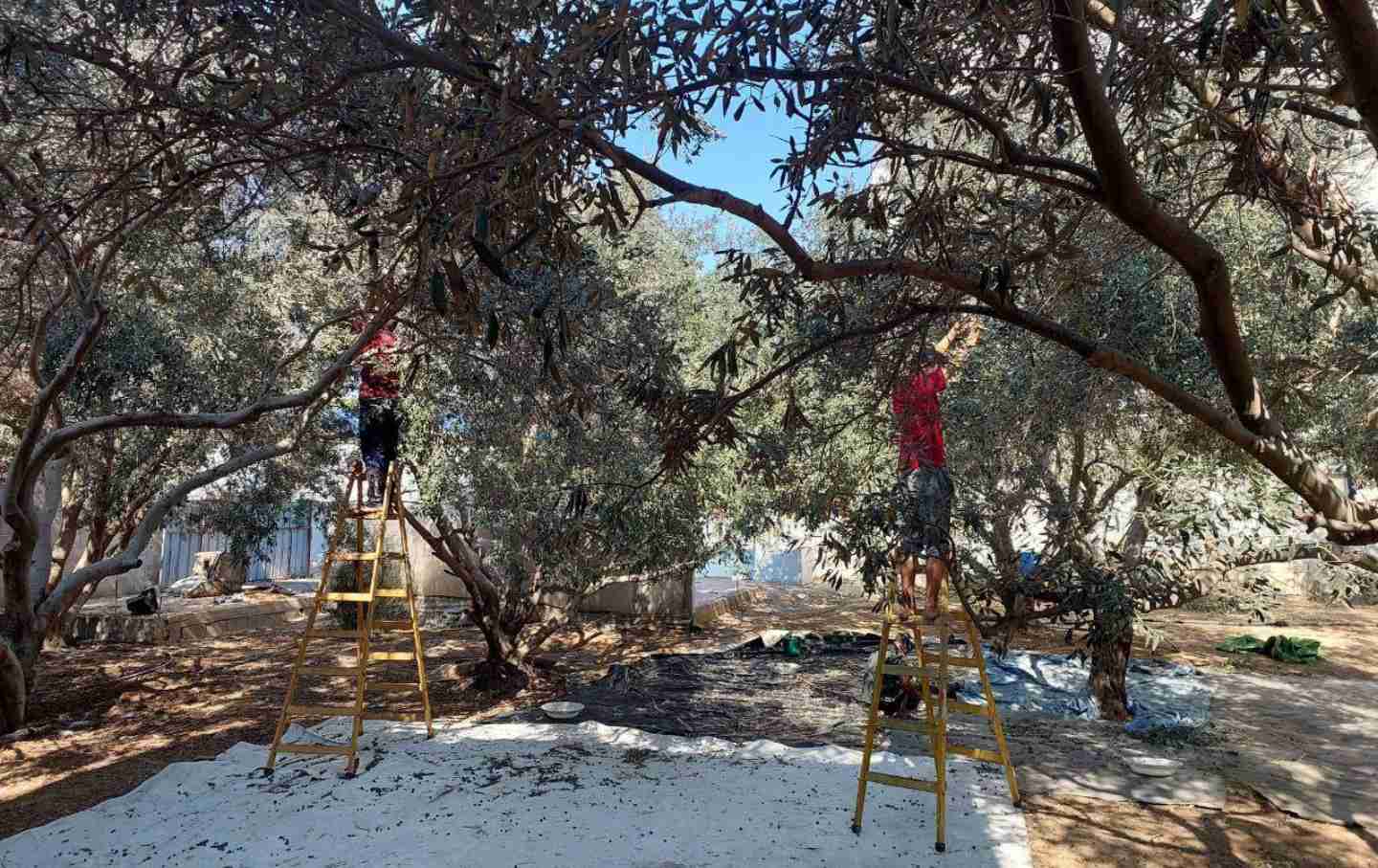
Israel Wants to Destroy My Family's Way of Life. We'll Never Give In. Israel Wants to Destroy My Family's Way of Life. We'll Never Give In.
My family's olive trees have stood in Gaza for decades. Despite genocide, drought, pollution, toxic mines, uprooting, bulldozing, and burning, they're still here—and so are we.

Trump’s National Security Strategy and the Big Con Trump’s National Security Strategy and the Big Con
Sense, nonsense, and lunacy.
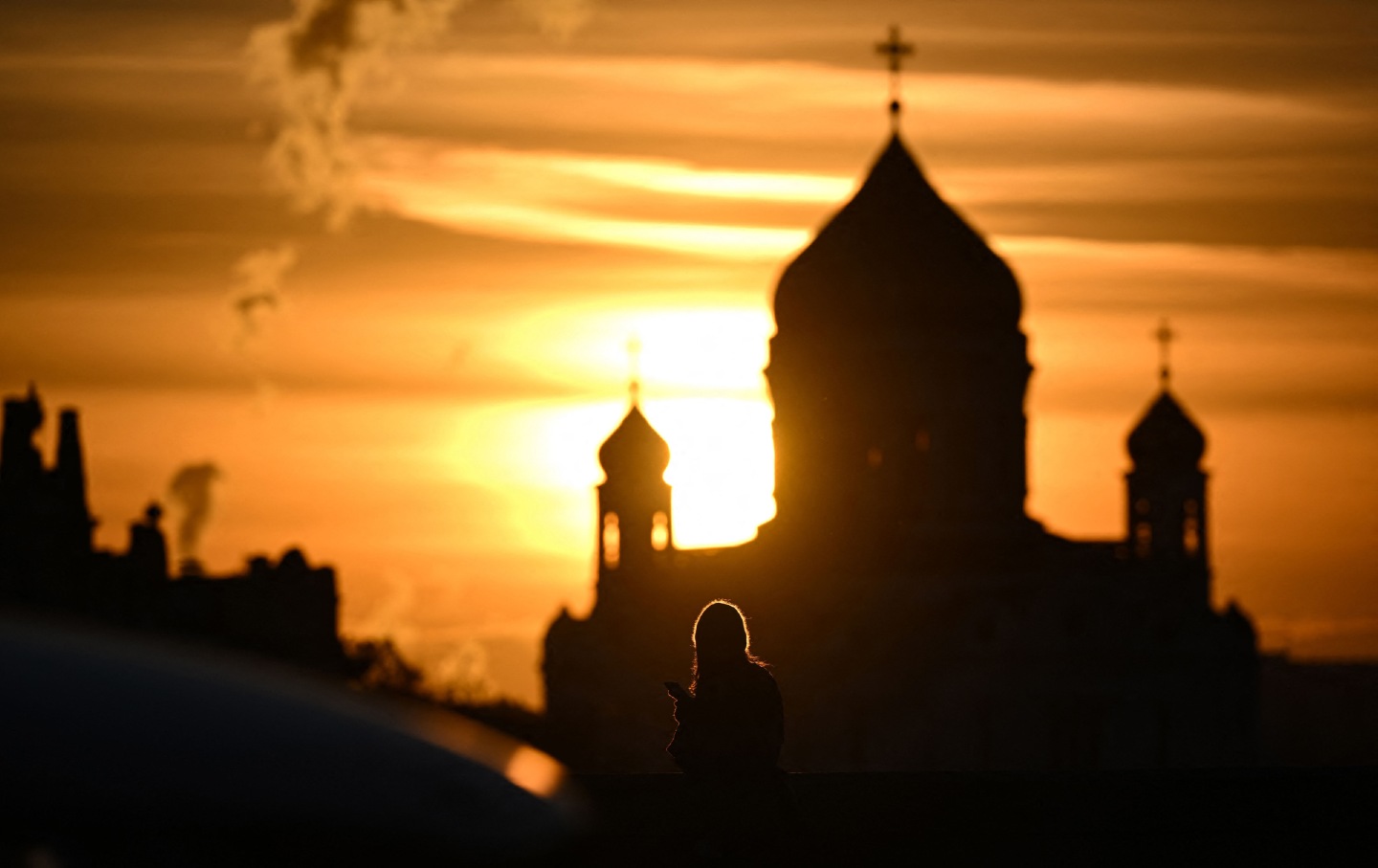
Does Russian Feminism Have a Future? Does Russian Feminism Have a Future?
A Russian feminist reflects on Julia Ioffe’s history of modern Russia.
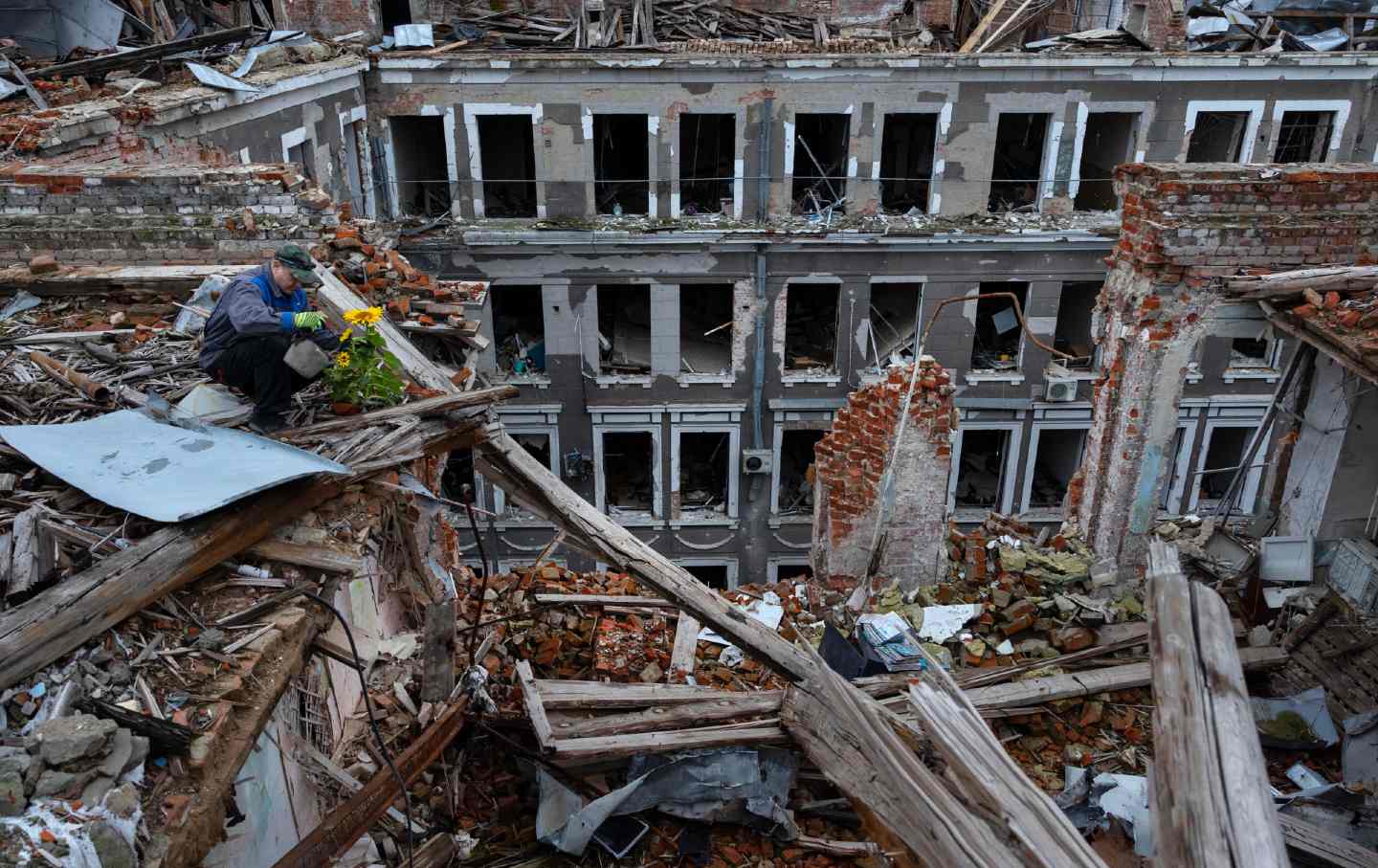
Ukraine’s War on Its Unions Ukraine’s War on Its Unions
Since the start of the war, the Ukrainian government has been cracking down harder on unions and workers’ rights. But slowly, the public mood is shifting.


